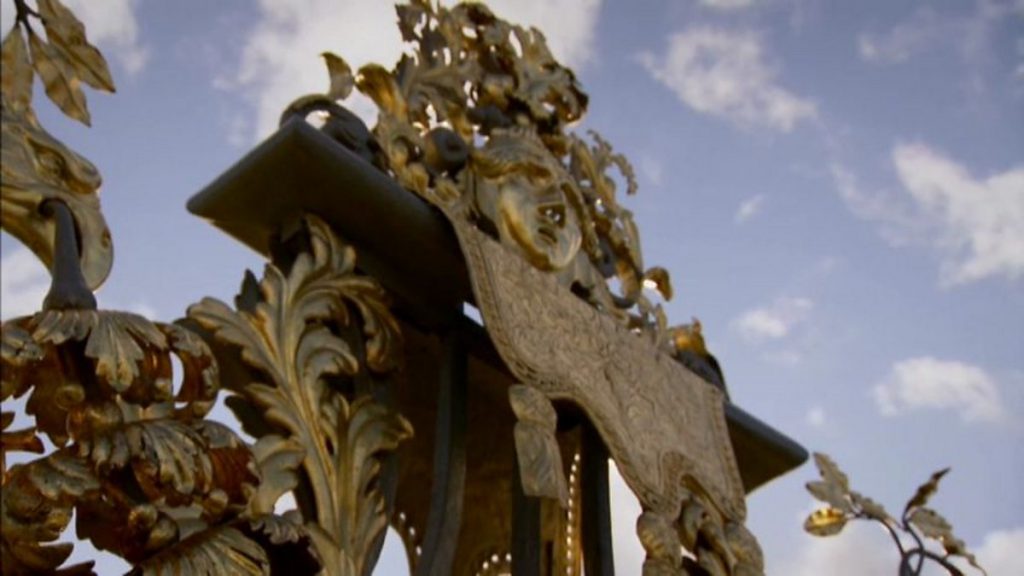Metalworks episode 3 – The Blacksmith’s Tale: In a story where progress meets creative invention, this film looks at how the blacksmith created items in wrought and cast iron that both served and embellished society. From the earliest ornate hinges and doors to magnificent baroque gates and mass-produced street furniture, it reveals the mastery of metalworkers such as Jean Tijou, Robert Bakewell and John Tresilian, the designs of Robert Adam and George Gilbert Scott, and the mass marketers of the Victorian age such as the Saracen foundry.
Treasures are drawn from all corners of the UK in a celebration of the best of British decorative ironwork. Series looking at aspects of British metalworking over the centuries, including the art of the silversmith, the history of armour and the work of the blacksmith.
Metalworks episode 3 – The Blacksmith’s Tale
A blacksmith is a metalsmith who creates objects primarily from wrought iron or steel, but sometimes from other metals, by forging the metal, using tools to hammer, bend, and cut (cf. tinsmith). Blacksmiths produce objects such as gates, grilles, railings, light fixtures, furniture, sculpture, tools, agricultural implements, decorative and religious items, cooking utensils, and weapons. There was an historical opposition between the heavy work of the blacksmith and the more delicate operation of a whitesmith, who usually worked in gold, silver, pewter, or the finishing steps of fine steel. The place where a blacksmith works is called variously a smithy, a forge or a blacksmith’s shop.
While there are many people who work with metal such as farriers, wheelwrights, and armorers, in former times the blacksmith had a general knowledge of how to make and repair many things, from the most complex of weapons and armor to simple things like nails or lengths of chain.
Blacksmiths work by heating pieces of wrought iron or steel until the metal becomes soft enough for shaping with hand tools, such as a hammer, an anvil and a chisel. Heating generally takes place in a forge fueled by propane, natural gas, coal, charcoal, coke, or oil.
Some modern blacksmiths may also employ an oxyacetylene or similar blowtorch for more localized heating. Induction heating methods are gaining popularity among modern blacksmiths.
Color is important for indicating the temperature and workability of the metal. As iron heats to higher temperatures, it first glows red, then orange, yellow, and finally white. The ideal heat for most forging is the bright yellow-orange color that indicates forging heat. Because they must be able to see the glowing color of the metal, some blacksmiths work in dim, low-light conditions, but most work in well-lit conditions. The key is to have consistent lighting, but not too bright. Direct sunlight obscures the colors.




